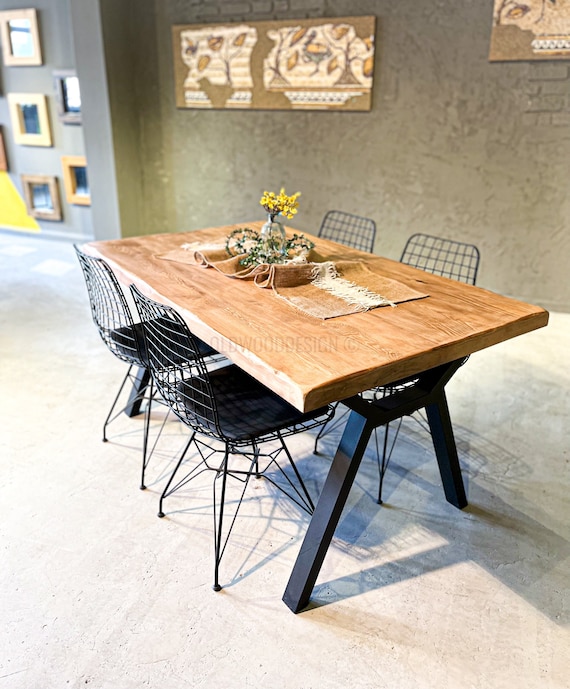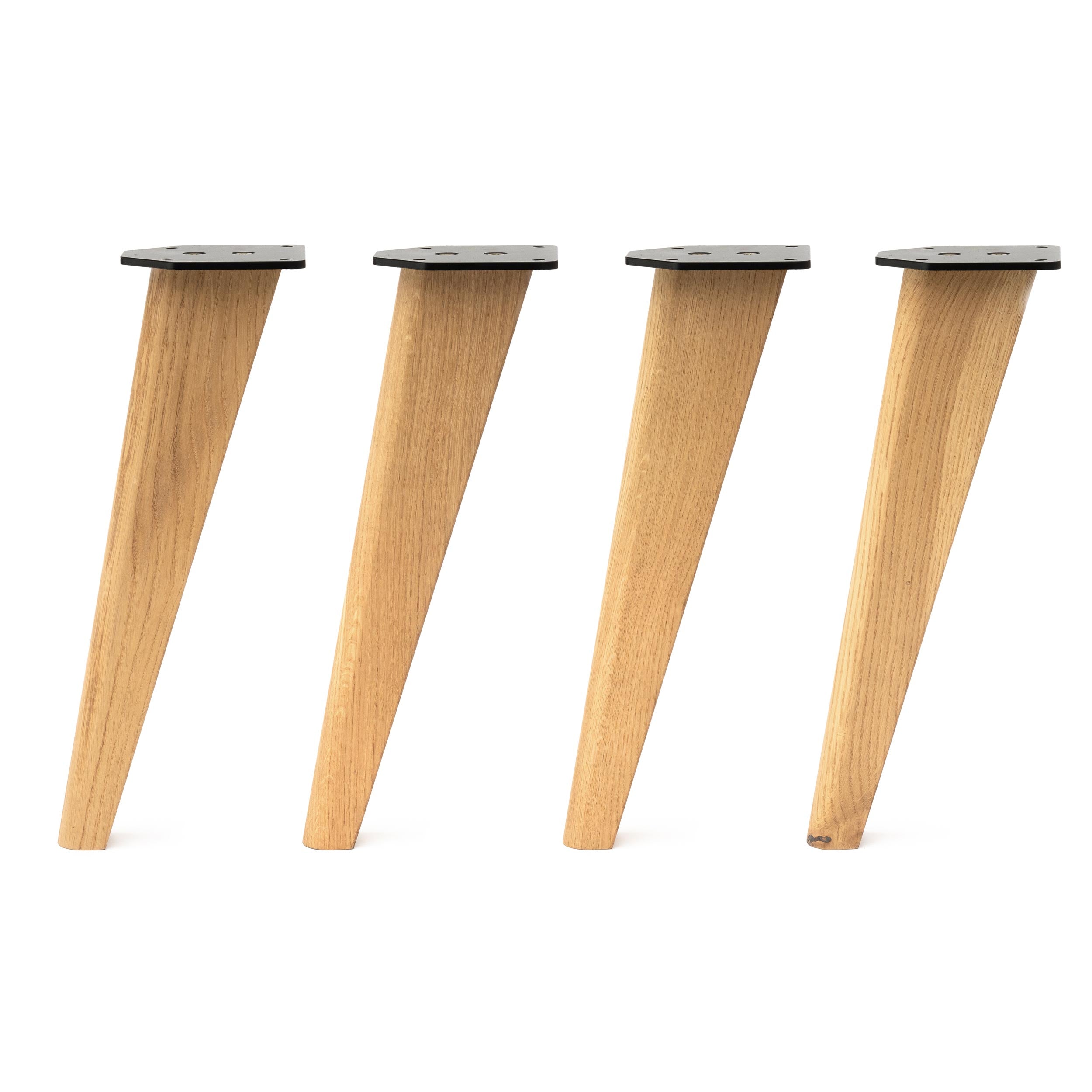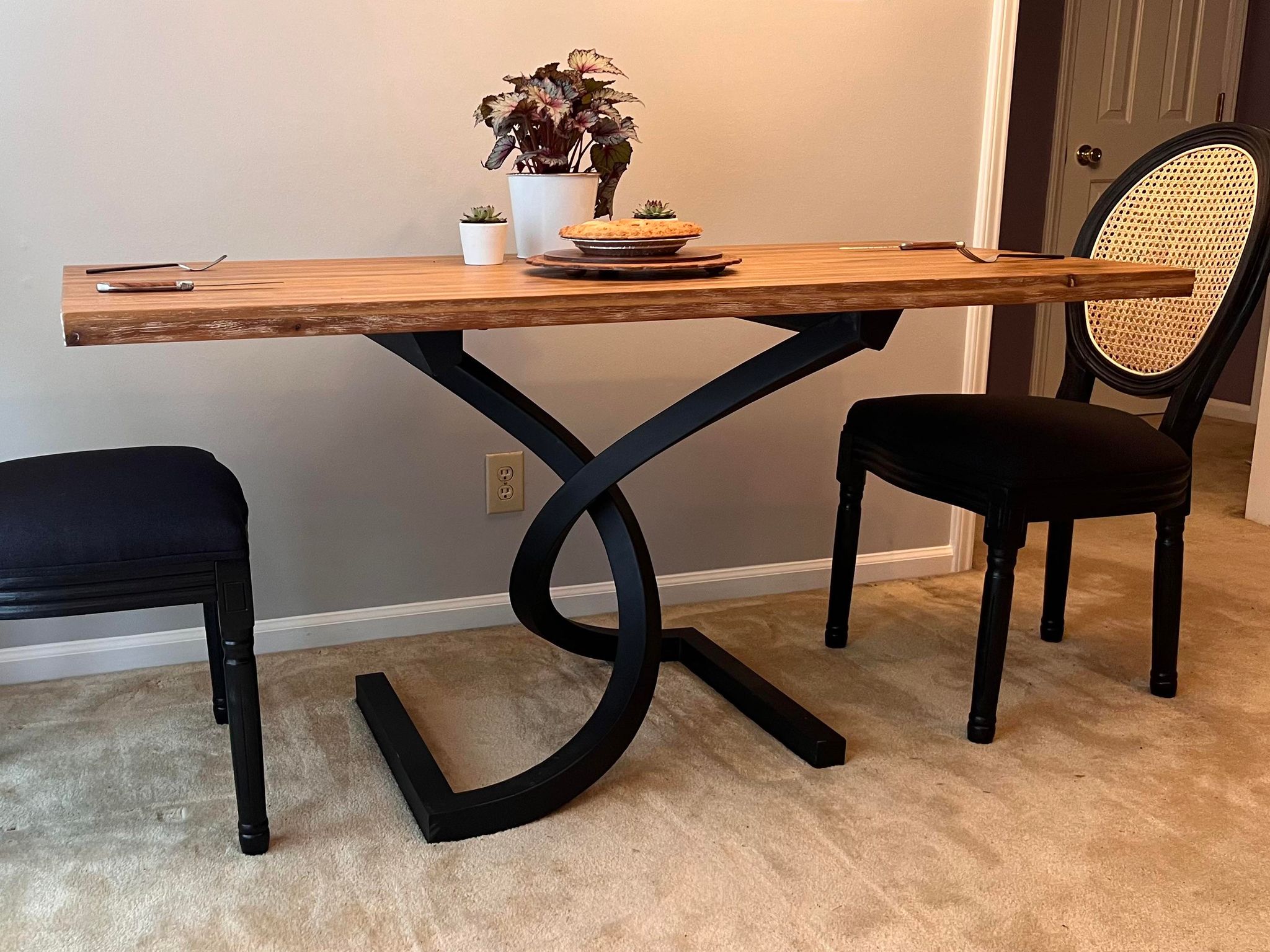Locate Timeless Appeal in Handcrafted Dining Table Legs Wood Selections
Essential Considerations for Picking the Right Table Legs Timber
Choosing the suitable wood for dining table legs includes a nuanced understanding of different elements that influence both performance and aesthetic appeal. The choice of wood type, varying from durable woods to extra fragile softwoods, plays an essential duty in making sure longevity and security. Each of these components can substantially influence the general experience of your dining space.
Importance of Wood Kind

Hardwoods, such as walnut, maple, and oak, are frequently chosen for their strength and resistance to wear. These types of timber give a durable structure that can stand up to everyday usage, making them optimal for dining tables that experience constant gatherings. On the other hand, softer woods like pine might be extra at risk to scratches and damages, which might not be suitable for high-traffic areas.
Furthermore, the choice of timber can additionally affect the ease of maintenance. Some timbers need regular oiling or securing to protect their appearance, while others might be extra forgiving. Eventually, selecting the ideal timber type entails stabilizing aesthetic factors to consider with functional requirements, ensuring that the eating table legs not only look enticing however also stand the examination of time.
Evaluating Security and Stamina
When evaluating table legs, one should consider the security and strength they supply to the overall framework. The legs are crucial in sustaining the tabletop and making certain the dining experience is enjoyable and risk-free. A stable table is necessary for preventing tottering or tipping, which can cause spills or crashes during dishes.
The choice of wood kind considerably influences strength. Hardwoods such as maple, oak, and walnut are commonly much more long lasting and durable than softwoods like pine or fir. Furthermore, the density and style of the legs play a vital role; thicker legs or those with a tapered style can supply better support and stability.

Visual Considerations
While performance is extremely important, the aesthetic charm of table legs can not be overlooked, as they substantially affect the overall style and atmosphere of the eating space. The choice of layout, timber, and coating can enhance or detract from the table's aesthetic effect.

Surfaces additionally play an essential function in visual appeals. An all-natural coating can highlight the timber's inherent beauty, while painted or tarnished legs can introduce color and character right into the room. Additionally, the percentage and range of the legs about the tabletop and surrounding furnishings has to be considered to guarantee visual equilibrium and communication.
Inevitably, the eating table legs must not just serve a practical objective but also add to a natural and welcoming environment, making them a crucial factor to consider in the total layout of the eating location.
Upkeep Needs
To make certain longevity and preserve the beauty of wood table legs, normal upkeep is essential (Dining Table Legs Wood). Wood is an all-natural product that can be at risk to harm from dampness, warm, and use. As a result, developing a routine care plan will dramatically boost the longevity of your table legs.
Begin with regular cleaning making use of a soft, lint-free fabric to eliminate dirt and particles that can scrape the surface. For even more detailed cleansing, use a light soap remedy and damp fabric, avoiding excess dampness that might leak right into the timber. It is recommended to use a high-grade wood polish or conditioner every couple of months to nourish the timber and preserve its luster.
In addition, think about the environment where the table is positioned. Prevent straight sunlight, as it can cause fading, and utilize placemats or rollercoasters to safeguard the surface area from warm and dampness. Attend to any scratches or dents immediately with suitable timber filler or touch-up pens to avoid more wear and tear. By sticking to these maintenance needs, you will not just maintain the aesthetic allure of your wooden table legs yet also expand their functional life expectancy.
Budget Plan and Expense Aspects
Spending plan and price factors frequently play an important function in the decision-making procedure for choosing wood eating table legs. When reviewing alternatives, it is necessary to establish a clear budget that aligns with your overall furnishings financial investment. The price of wood table legs can differ substantially based upon the sort of workmanship, timber, and style complexity.
Woods such as cherry, oak, and walnut commonly regulate higher prices due to their durability and visual charm. On the other hand, softer woods like ache might be a lot more budget-friendly however might not supply the exact same durability. Additionally, personalized Recommended Site or artisan-crafted legs can sustain extra prices, mirroring the skill and time bought their development.
It is also important to take into consideration the prospective lasting worth of your investment. While deciding for lower-cost materials could seem financially sensible initially, they might require even more frequent substitute or repair services, inevitably enhancing overall expenditure.
Therefore, stabilizing quality and expense is essential. Focus on products that satisfy your visual preferences while guaranteeing they fit comfortably within your budget plan, allowing you to produce an eating area that is both practical and aesthetically attractive.
Verdict
In final thought, choosing the proper timber for eating table legs demands mindful factor to consider of numerous factors, including timber kind, security, aesthetics, maintenance, and budget. Ultimately, a well-informed choice will certainly boost the long life and aesthetic charm of the eating table, making sure fulfillment and performance for years to come.
Selecting the best type of wood for eating table legs is critical for both visual charm and structural integrity. Ultimately, picking the ideal timber type involves stabilizing visual considerations with useful requirements, ensuring that the dining table legs not just look attractive however also stand the examination of time.
It is a good anonymous idea to apply a top quality wood gloss or conditioner every few months to nourish the timber and preserve its luster.
The price of wood eating table legs can differ considerably based on the type of wood, design, and workmanship complexity.
In verdict, selecting the ideal wood for eating official statement table legs requires careful factor to consider of various elements, consisting of timber type, security, appearances, maintenance, and budget.